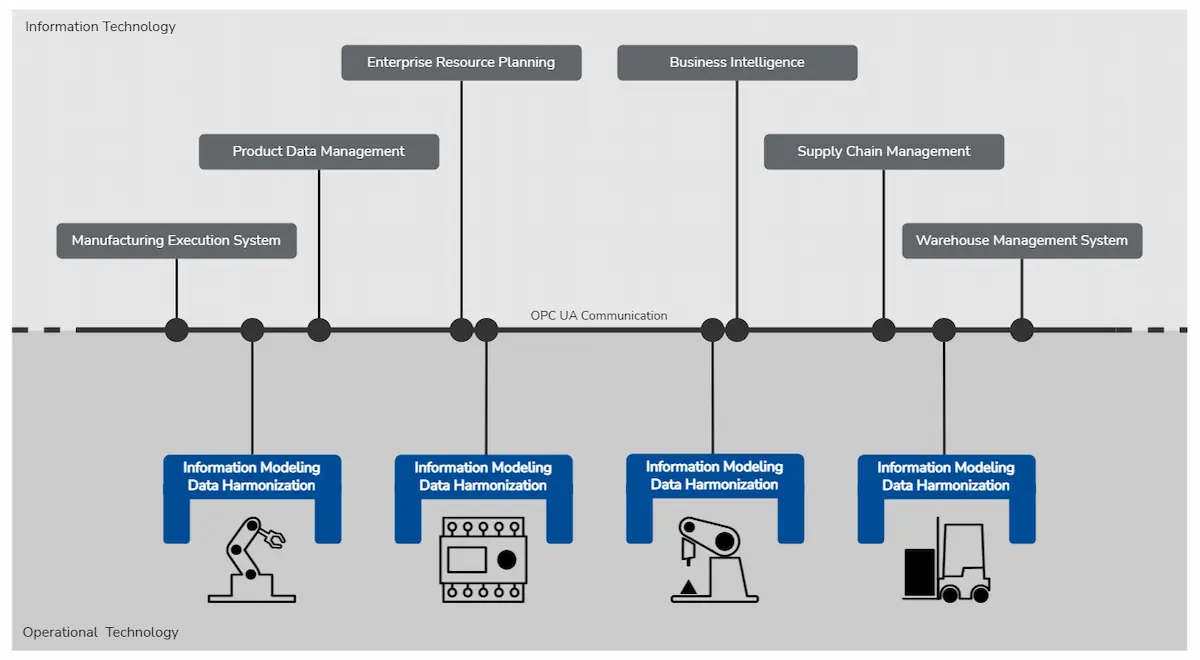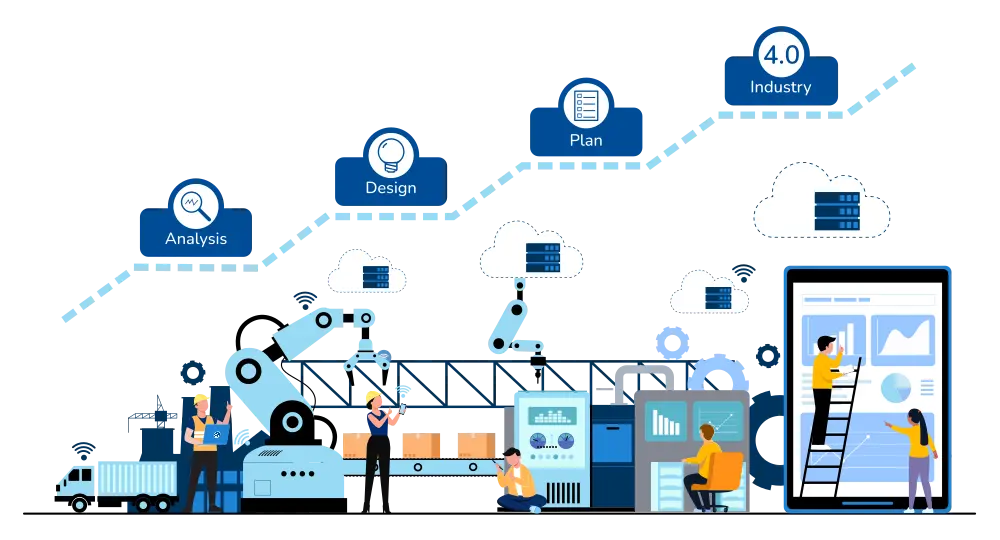How we create an Industry 4.0 Roadmap for plants and factories
Introduction
The concept of data-driven plants, factories and production processes is not new, as, in most industries, product quality and traceability requirements are at a very high level. For example, the concept of lean manufacturing was invented in the 1990s and was already heavily reliant on data and just-in-time production. The increased computing power has since opened new ways to collect and utilize data from different sources to improve the value generated by production.
We at Prosys OPC have helped our customers for two decades to get relevant data from machines and devices for better decision making and gathered experience of the successful process for integration of operational technology (OT) and information technology (IT). Typical use cases are advanced job scheduling, material, and energy usage optimization, as well as predictive maintenance, and smart condition monitoring. Currently, we see more and more projects using simulation and digital twins, which are both important concepts in Industry 4.0.
One key point for a successful Industry 4.0 migration is that the data harmonization is done using information models that follow industry standards. From our article OPC UA and Information Modeling for Pharmaceutical Manufacturing, you can read how we collaborated with a pharmaceutical company to design capabilities for plug & produce. It is also important to establish Industry 4.0 compliant communication between all components, which is best achieved with standard OPC UA technology.

The purpose of data harmonization using information models is to reduce the integration work of Industry 4.0 systems. When the interface to the production process data is similar across the production units, the IT systems can use the same connector in a uniform manner. Typically, the real benefits start when more than one IT system is used in the factory. Exponential benefits are achieved when a solution is scaled to multiple production sites.
In our Industry 4.0 Roadmap process, everything starts with the analysis of the current capabilities of the production site and corporate IT infrastructure. The process then proceeds into designing the affordable yet still secure, effective, and scalable setup. In the final step, we come up with a plan that contains the hardware, software and services needed. The supplied documentation also estimates the price tag and delivery schedule.
More precisely, our service includes the following steps:
- Analyzing the existing OT and IT capabilities
- Designing the new Industry 4.0 architecture
- Planning the delivery and implementation
Roadmap 4.0 Steps
1. Analyzing the existing OT and IT capabilities
Every production site is different, and the most important part of this service is to understand how the production line works and what the capabilities of the existing processes and equipment are in terms of delivering data for the IT systems. Also, it is necessary to understand the functionalities of existing MES, ERP, BI and other IT systems that utilize the data.

2. Designing of the new Industry 4.0 architecture
Once the existing infrastructure is defined, the work for the future architecture can start. To make the solution secure, we usually prefer to place an aggregating server between the automation network and IT network. This solution has been described in the article Securing automation networks in Industry 4.0 world in more detail. We also analyze the data transferred between the production level components and IT systems and define the necessary gateways for protocol conversion, as well as necessary information models for scalability.
3. Planning of the delivery and implementation
As we are more of doers than academics, we also want to go forward with something that is possible to implement with reasonable price and effort. To ensure this, the result of our Industry 4.0 Roadmap service includes a plan for software, hardware and services required for the implementation with the estimated cost. The plan enables the customer to make implementation decisions based on concrete facts of the benefits and costs.
The bottom line of the Industry 4.0 Roadmap service
When we work together with our customers, we develop solutions where high and uniform data availability and harmonization enable plug & produce operations and smart production with several benefits:
- Flexible configuration and short setup time of production lines
- Easy installation, onboarding and replacement of devices and machines
- Information modeling allows machines to understand the data they share
- Use of the best software applications and cloud services with one interface
- Increased network, device, application, and user security
Our service is not limited to a specific industry, and we have pleased customers in various businesses, including both process and discrete industries. This service is available worldwide, as long as we can arrange a physical visit to the plant and are able to review the allocated resources from the customer. The affordable project starts from 5 days of expert work and expands according to the size of the factory floor and the number of existing systems.
If you are interested in the Industry 4.0 Roadmap service for your plant or factory, feel free to directly contact the author, Pyry Grönholm or Prosys OPC sales using our contact form.
Author Info

Pyry Grönholm
CEO, Prosys OPC
Email: pyry.gronholm@prosysopc.com
